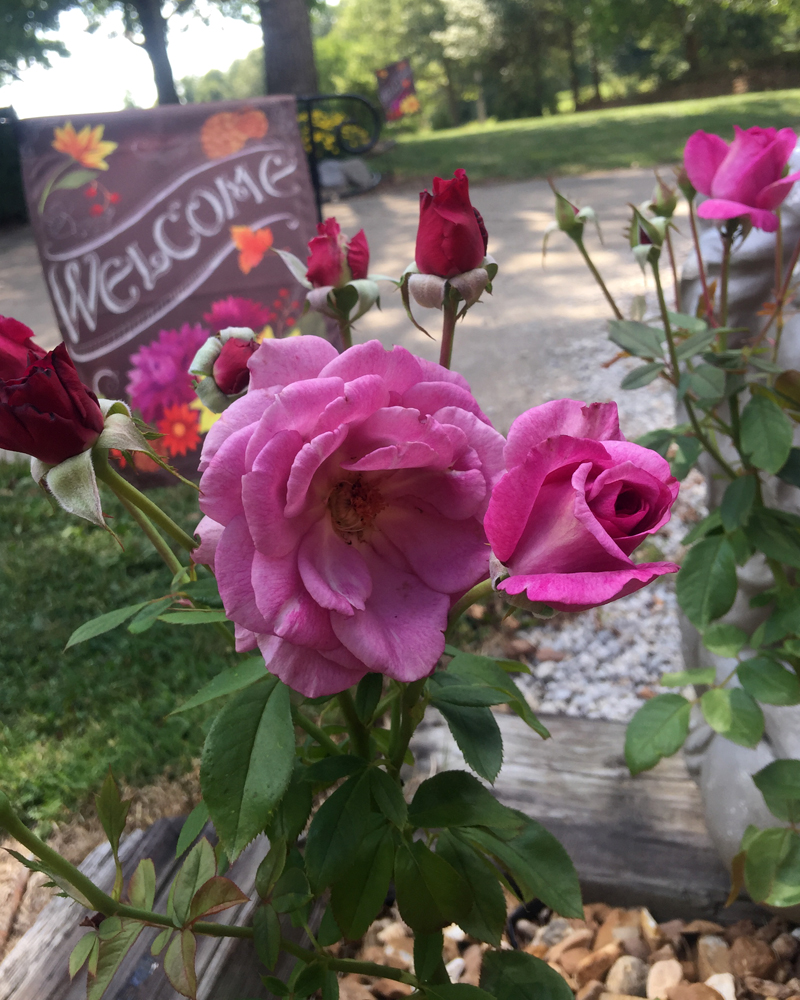
Summer Time of Easy Livin’ Sets The Stage
It’s the dog days of summer. Excessive heat can create conditions for our roses to produce smaller blooms and stunted growth to preserve water. Many gardeners don’t realize that right now is the time to prepare for a glorious fall rose display.
August is the time to prepare for a spectacular fall rose bloom
September, October, November and even up until Christmas, fall is perfect throughout much of the country to spend time in your rose garden. You can enjoy the fruits of your labor, contemplate strategies for expansion and begin to winterize your roses. The cooler temperatures of fall create a glorious canvas for the fall rose show. It’s time now to begin the process of cutting back roses for your fall bloom. ‘Kimberlina’, a ‘Floribunda of the Year’ 2009 winner is such a spectacular rose in the fall I chose it to show you how to cut back your roses to create a spectacular fall bloom.
Cutting Back Your Roses For Fall
Cooler Temperatures of Fall Intensify Colors
Cooler temperatures in fall create a palette of colors that makes your roses look doubly magnificent. From Wisconsin to Texas I’ve seen roses continue to bloom through the holidays. Roses can tolerate 3 days of hard frost of temperatures below 21 degrees before they are fully dormant for the season. So you can plan on roses for your bouquets for the Thanksgiving table in Illinois, maybe even Wisconsin. September is time to determine if there are still any American Rose Society rose shows in the area you may want to exhibit at as well.
Here are some ‘Rose of the Year’ winners and roses exclusive to Jackson & Perkins that I’ve grown from IL to Texas successfully that bloom beautifully all season and into the fall:
#1 ‘Kimberlina’ ‘Floribunda of the Year’ 2009
Â
#2 ‘Black Cherry’ ‘Floribunda of the Year’ 2006
Â
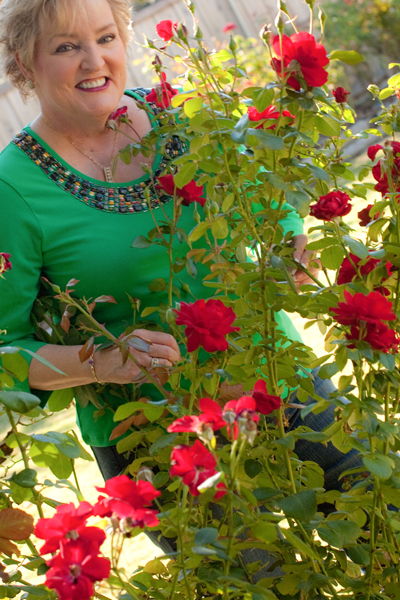
#3 ‘Moondance’ ‘Floribunda of the Year’ 2007
Â
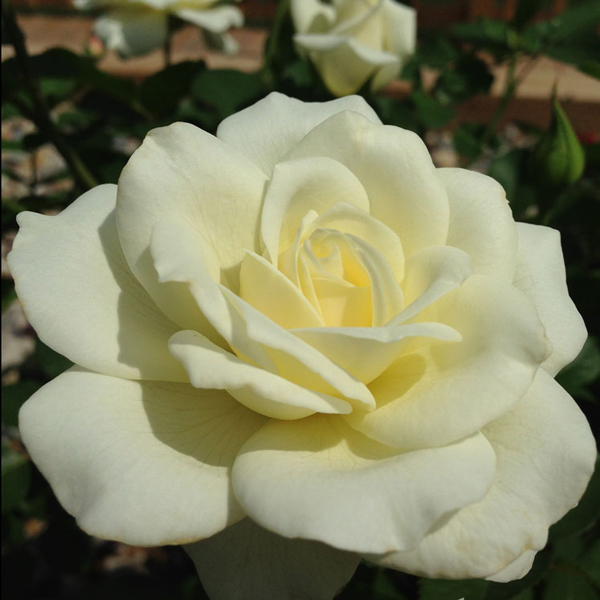
#4 ‘Sugar Plum’ Exclusive at Jackson & Perkins
Â

#5 ‘Soft Whisper’ Exclusive at Jackson & Perkins
Â
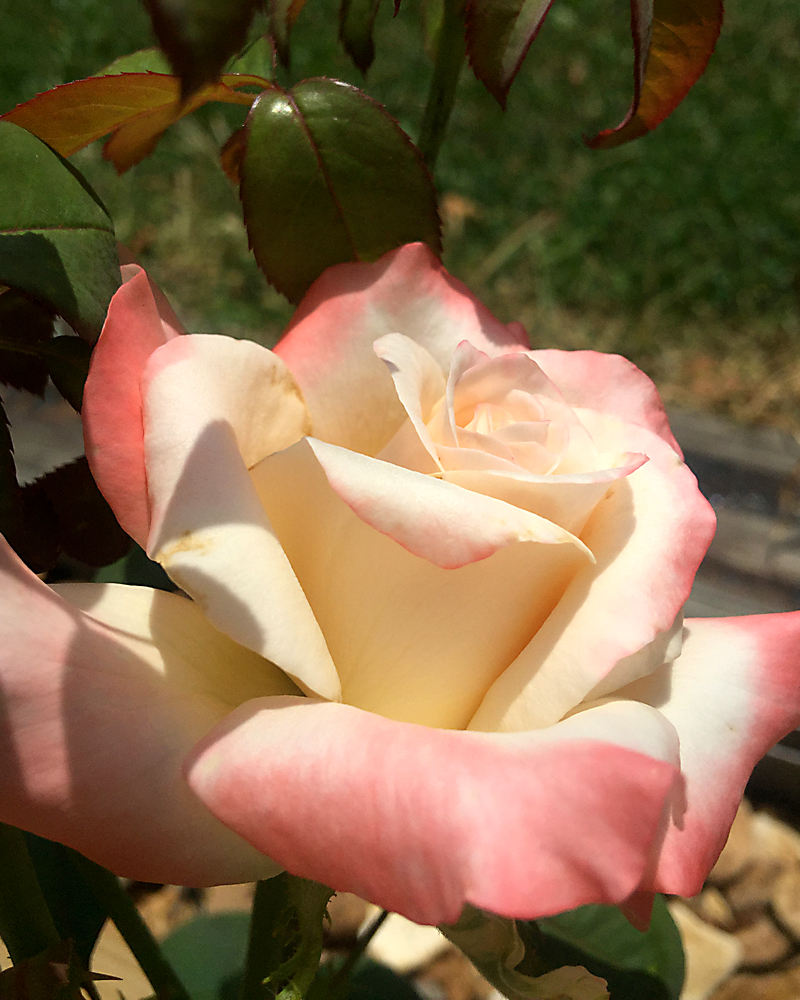
Cooler Nights Begin
The nights begin to get cooler which creates an environment for black spot* and mildew so water early in the day allowing time for your garden to dry out before night fall. When you travel, and if you are putting in a small rose garden, the perfect watering solution is planting your roses in the Greenwell Water Saver
Nature Demands Balance
When roses (and virtually any other plant) reach the point of excessive water stress, they don’t “feed,” nor do they try to grow, they simply endure the heat to remain alive. That’s why even when you’re watering daily with what feels like excessive water amounts, many rose bushes will begin shedding their leaves to reduce their water stress. Many folks mistakenly think that dropping of leaves means their plant may be dying or they have “done something wrong.†Let’s dispel the myth. This is nature’s way of plant preservation during excessive heat. Since roses transpire through their foliage, dropping some of their leaves helps minimize water loss. This slows and can literally stop the flow of sap from the roots upward, so no food is taken in. Remember cutting back for fall to leave some foliage because roses feed through their leaves. Nature demands balance. Even in times of extreme heat I have seen my roses continue to remain pretty with just smaller blooms and less frequent bloom cycles. Roses seem to go into almost a dormancy state to conserve energy and water during the hottest part of summer.
August Rose Garden Check List
- Remove all debris from the garden
- Check for spider mites by feeling the underside of the leaves, they look & feel like salt and pepper and can be removed with a water jet sprayÂ
- Fertilize with Jackson & Perkins Continuous Slow Release Plant Food Roses Ultimate Collection Rose Food
- Add a layer of Good Dirt Soil Conditioner around each rose bush, top with hard wood mulch with breaks down into the soil and replaces it
- Check out DIY composting options to convert useful veggie scraps into soil building organic plant food Â
- Replace mulch as needed to conserve water and keep your bed cooler
- Continue watering program, plant new roses using Greenwell Water Saver
- Order fall rose deals and companion plants like clematis specials that you can plant now.Â
Summer Rose Watering Guide
90+ degrees: Â Â Water every day
80 degrees: Â Â Â Â Â Water every two days
70 degrees: Â Â Â Â Â Water every three days
60 degrees: Â Â Â Â Â Water every four days
50 degrees: Â Â Â Â Â Water every five days
- Check hanging baskets and container roses daily because they dry out much faster than plants planted in the ground
- Check on any fall rose shows, cut roses back for rose shows and State Fairs
- Cut back your roses and stagger the times of pruning from now thru through the end of September when you want to start to let your roses form rose hips and go into dormancy so they don’t bloom all at once (what’s known as ‘cropping’)
- Prune your rose like a vase
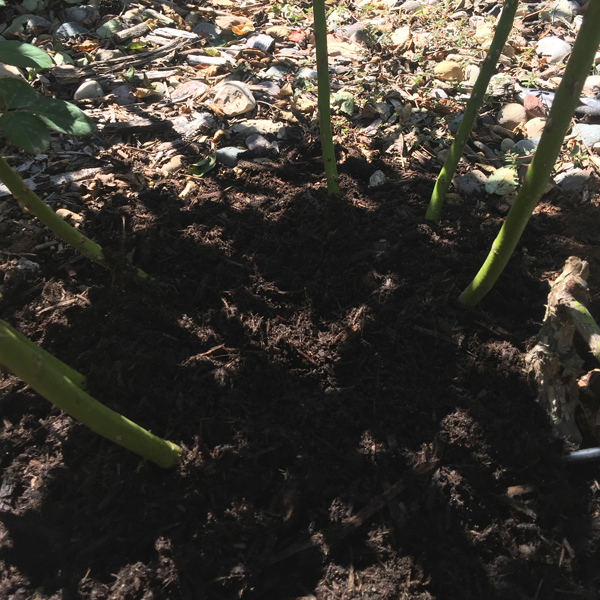
‘Double Delight’ hybrid tea rose, pruned like a vase, fertilized, Canadian Spagnum peat moss layer added, ready for mulch for winter protection
How To Cut Back Your Roses For A Fabulous Fall Bloom
A good rule of thumb is to prune your rose bush about one-third to one-half their height. Prune out dead wood. Leave the strong hardy canes. Just deadhead your new rose bushes.
Folks that show roses cut back for the rose shows in their area or for the County and State Fairs. If you plan on showing in your local rose shows then cut back your roses based on this handy guide to approximately how long it takes to grow a rose:
Repeat Rose Cycles In Days Â
Hybrid teas, grandifloras, and floribundas: Â Â Â Â Â Â Â Â Â Â Â Â Â Â 42 to 54 Days
Multi-Petal Floribundas (Europeana):Â Â Â Â Â Â Â Â Â Â Â Â Â Â Â Â Â Â Â Â Â Â Â Â Â Â Â Â Â Â Â Â Â Â Â Â Â Â Â Â Â 54-60 daysÂ
Single Petal Floribundas (Playboy)                                               35 Days          Â
Miniatures                                                35-42 Days               Â
Follow this guide to a spectacular fall rose bloom and you can enjoy autumn in your garden and your roses will enter into winter dormancy the better for it as stronger plants.
Organic treatment for black spot
* Treatment: According to author and horticultural professor Jeff Gillman, who has conducted extensive research on black spot remedies, a spray composed of one part cow’s milk* and two parts water is the best answer to the disease. When applied weekly, the solution controls black spot as well as any synthetic fungicide, including Chlorotalonil.
Gillman says he thinks it’s the lactoferrin that milk contains that makes it effective against black spot. Lactoferrin also helps to fight diseases in people.
*any fat content you prefer. Rice, soy, and almond milk will have no affect on roses.
ANOTHER UPDATE: 2/3 water and 1/3 milk solution works on black spot. The solution also acts as a deer repellent according to the West Virginia Botanical Garden. I haven’t tried it with the raccoons as of yet, but I sure intend to try it.
Â
Â
Â
Â
Â
Â
Save
Great to have all the tips in one place! Enjoy your fall bloom! It has to carry us for several months!
It surely does! Still lots of lovely time to spend out there! Love, Susan